
Projection and mapping: technical solutions for immersive events
Projection and mapping: technical solutions for immersive events
In the world of event production, video projection and video mapping have become key pillars of modern scenography. These technologies make it possible to transform a venue, enhance architecture, or create spectacular immersive experiences that leave a lasting impression on audiences. Thanks to ultra-high-definition projection systems and the synchronization of dynamic content with real-world volumes, it is now possible to tell a visual story on all types of surfaces, whether static or moving.
At GL events Audiovisual & Power, we offer tailor-made technical solutions in video projection and mapping, perfectly suited to all types of events: trade shows, conventions, concerts, festivals, product launches, exhibitions, or official ceremonies. Through our expertise, we combine visual creativity, technical reliability, and scenic intensity to turn every event into an unforgettable experience.
Understanding the concepts of video projection and mapping
Contemporary events increasingly seek visual impact and immersive experiences. In this context, video projection and video mapping have emerged as essential tools for staging. While they share a common goal (capturing attention and enhancing a space) their operation and applications differ. Gaining a better understanding of these two technologies helps in making the right technical choices for each type of event.
Definition of video projection in the event industry
Video projection in events refers to the use of projectors to display visual content (video, image, animation) onto a suitable surface. This technology relies on powerful equipment capable of projecting with high clarity in environments that are often bright, spacious, or complex. It enhances ambiance, reinforces a message, or supports a dynamic scenography, whether projected onto a giant screen, stretched canvas, or scenic structure.
Used for congresses, trade shows, product launches, or performances, video projection comes in various configurations: front projection, rear projection, synchronized multi-projector setups, or 360-degree projection.
What is mapping?
Video mapping, or projection mapping, goes beyond traditional video projection. It involves projecting visual content precisely adjusted to the shape of an object or architecture, turning any surface into a dynamic screen. This technique is based on a 3D model of the volumes to be covered, ensuring perfect alignment between the physical structure and the projected animation.
Thanks to mapping, a building can "come to life," a sculpture can "move," or an entire stage can transform in real time. Widely used in cultural events, immersive experiences, monumental shows, and brand activations, mapping creates spectacular effects that heighten emotion and audience engagement.
.png)
Choosing the right equipment for video projection
The success of a video projection project relies on the relevance of the technical equipment used. Each venue, event setup, and visual objective requires specific gear that is high-performing, reliable, and suited to the constraints of the site. To ensure smooth and immersive projection, it is essential to carefully select both the projector and the accompanying software tools. The right equipment enhances the content, strengthens visual impact, and guarantees flawless delivery in any condition.
Selecting the appropriate projector
The choice of projector depends on several key criteria:
-
Brightness (lumens), which must be sufficient to adapt to the venue’s ambient light,
-
Resolution (Full HD, 4K, or higher), which ensures the desired image sharpness,
-
Throw ratio (ultra-short, short, or long), depending on the distance between the projector and the surface,
-
Compatibility with multi-projection or edge blending setups, for panoramic or immersive displays.
In the event industry, professional projectors—laser or high-intensity lamp models—are preferred. These are capable of continuous operation, deliver accurate color rendering, and operate with quiet cooling systems. The most ambitious setups often require synchronization of multiple projectors, controlled from a dedicated production booth.
Software and control technologies
Beyond physical equipment, video management software plays a central role in the success of a video projection setup. These tools enable precise preparation, adjustment, and synchronization of content projected onto various surfaces.
Among the most commonly used in the event industry are:
-
Mapping software (such as MadMapper, Resolume Arena, or Watchout),
-
Multi-source control interfaces capable of managing multiple video streams simultaneously,
-
Powerful media servers integrating real-time playback systems, visual effects, and warping capabilities.
These tools offer unparalleled scenographic flexibility and allow for last-minute adjustments, while ensuring essential operational stability on site.
Mapping techniques for maximum impact
Video mapping has become an essential solution for delivering spectacular immersive experiences at events. By combining advanced projection technology with artistic creation, this technique transforms any surface into a dynamic visual display. To achieve a striking result, event professionals must master both the preparation of the projection site and the creation of custom content. The goal is to ensure maximum visual impact, in line with the scenographic intent and the universe of the brand or commissioning institution.
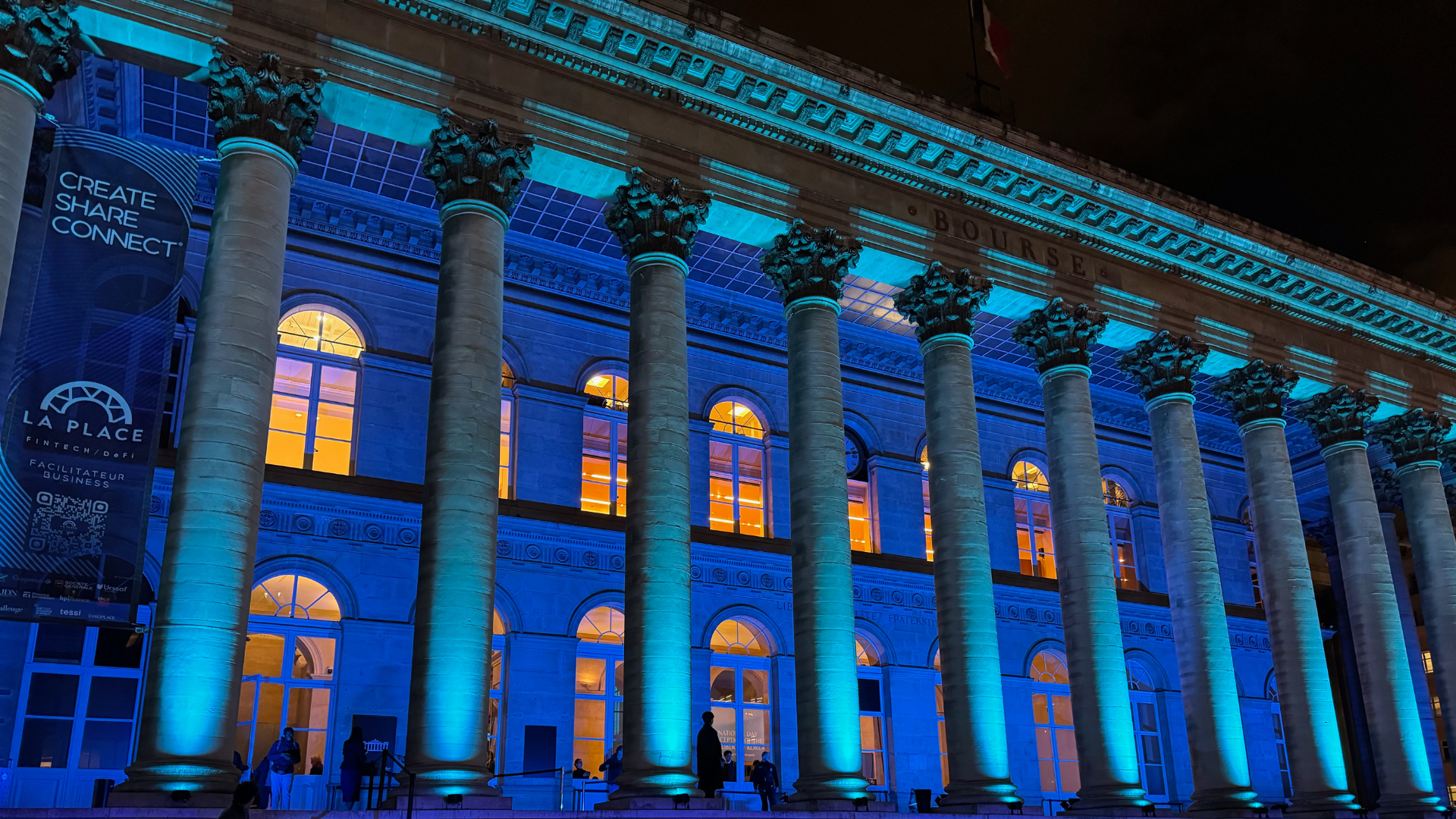
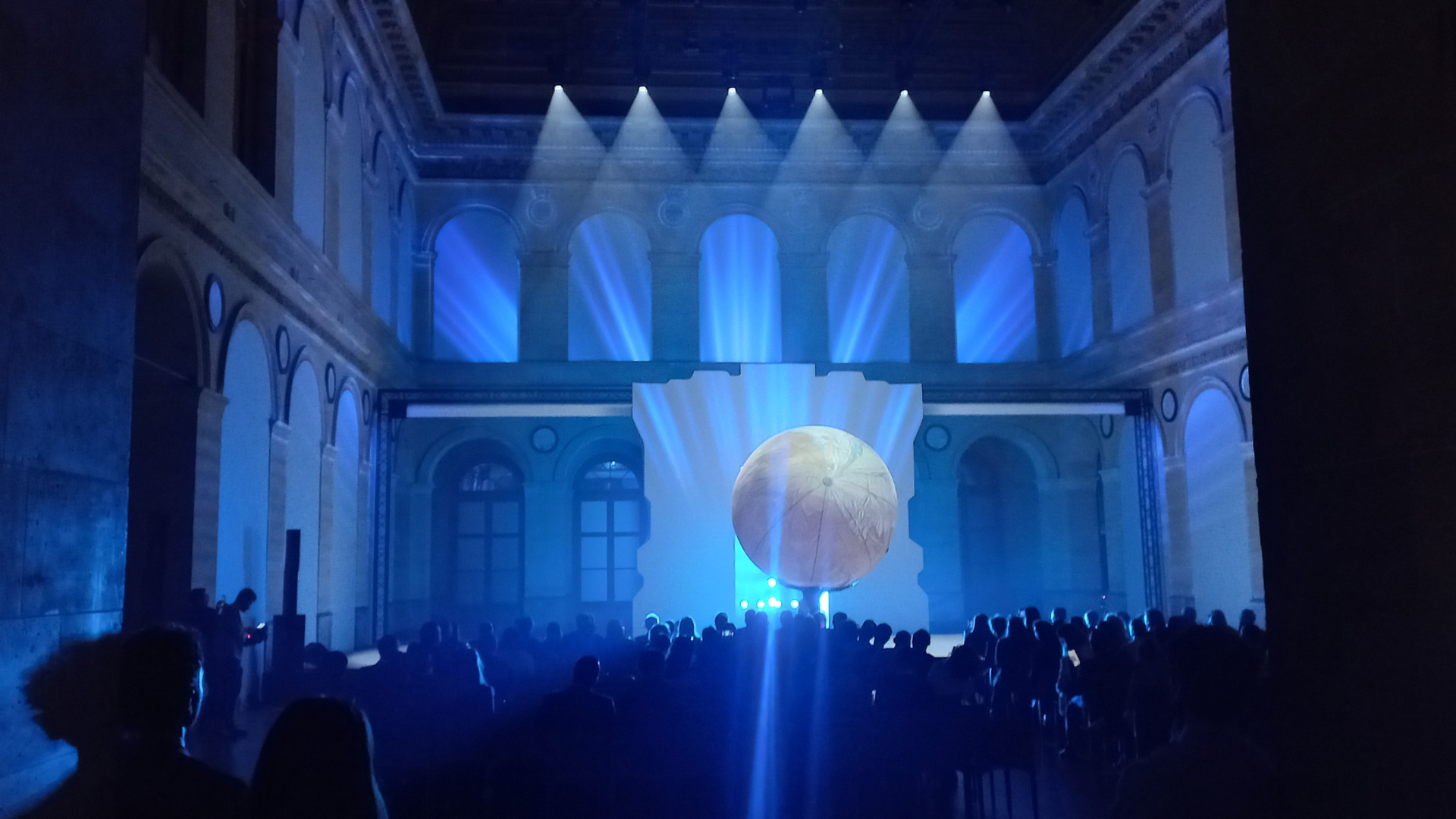
Site preparation and calibration
The first step in any event mapping project is to conduct a detailed analysis of the projection site. It is essential to understand the spatial layout, the nature of the volumes to be covered, the lighting environment, the flow of movement, and the audience’s position. With precise 3D modeling of the structures, technicians can anticipate perspective distortions and accurately position the professional video projection equipment. Once the projectors are installed, a rigorous calibration process is carried out to perfectly align the digital images with the physical surfaces. This operation ensures the sharpness of the visuals and the effectiveness of the immersive illusion.
For example, during the unveiling of the new visual identity of the Printemps store in Lyon, GL events Audiovisual & Power transformed the building’s façade through a custom video mapping. This service required a thorough site analysis and meticulous calibration to ensure a projection perfectly aligned with the existing architecture.
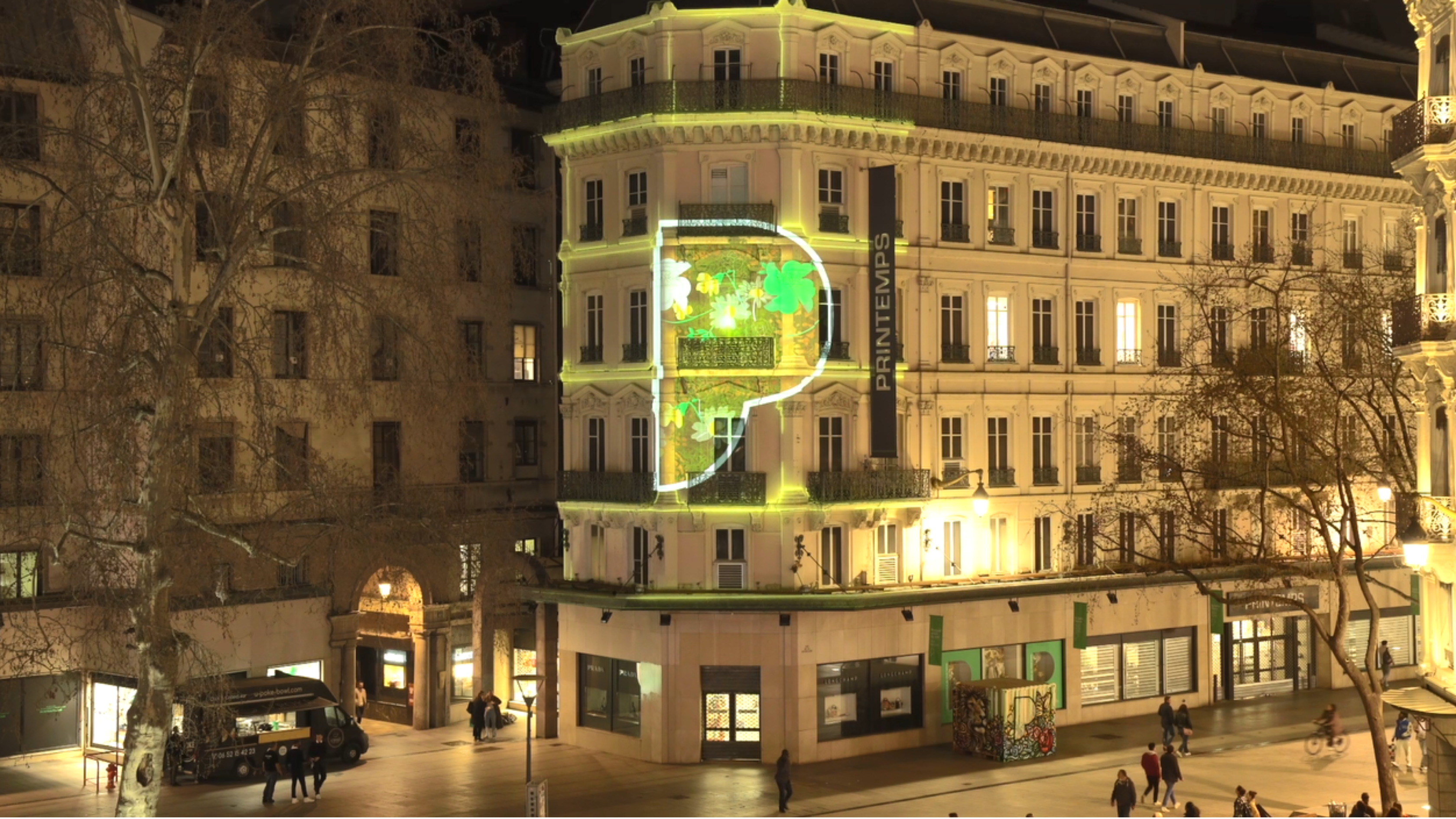
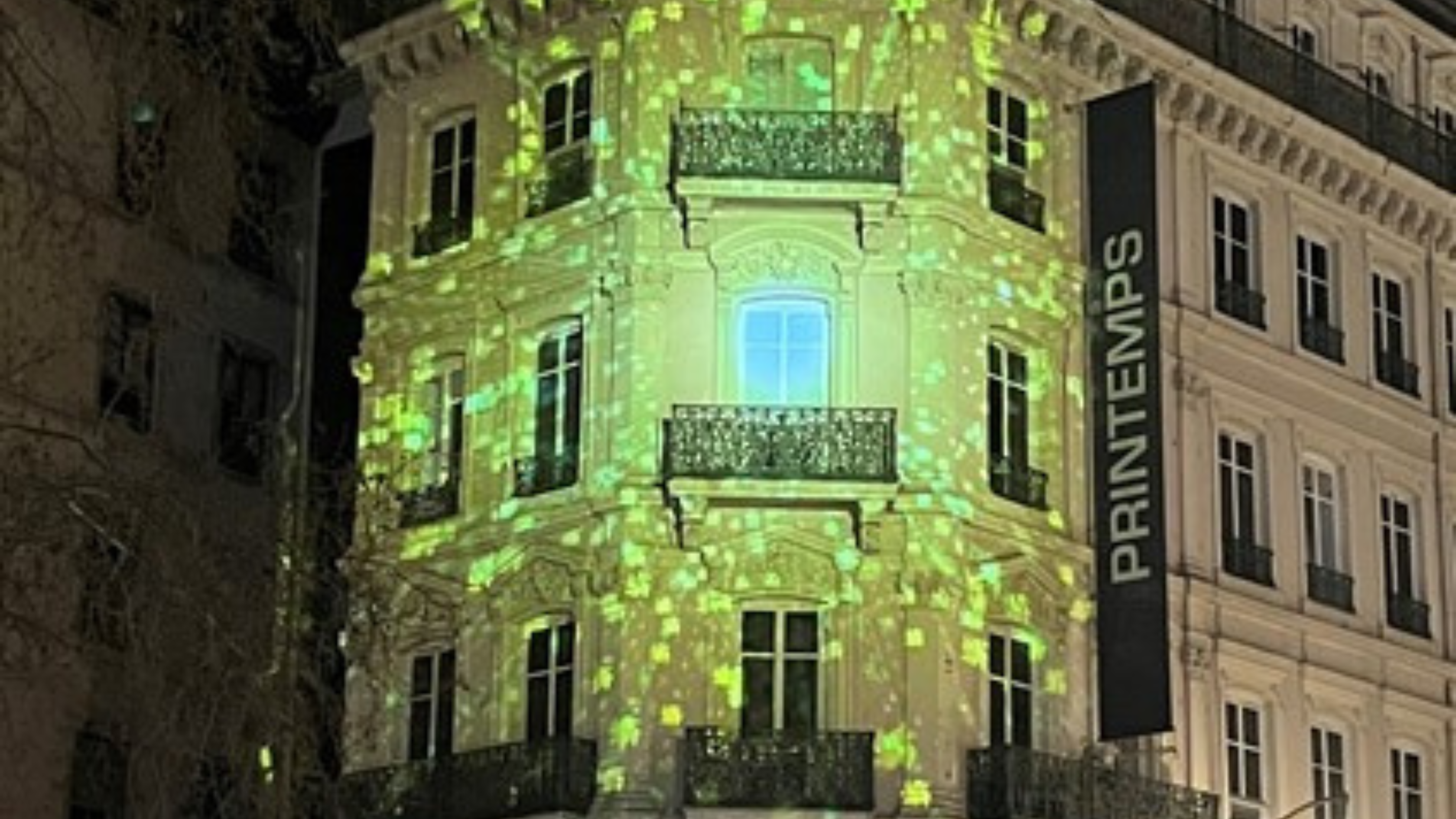
Creating content tailored for mapping
The success of an immersive video mapping experience also depends on the quality of the projected content. These are not standard videos, but graphic and animated creations specifically designed to interact with the shapes and volumes of the real set. Designers create sequences that take advantage of reliefs, textures, and architectural rhythms, using contrasts, lighting effects, synchronized motion, and transformation illusions. The integration of sound design, event lighting, or real-time interactions further enhances the immersive dimension. Each piece of content is crafted to extend the emotion, convey the message, and elevate the scenic environment, with the goal of delivering a complete audiovisual experience.
Integrating video projection and mapping into event design
In an event project, the integration of video projection and immersive mapping should never be treated as a mere technical addition at the final stage. These powerful visual solutions must be considered from the very beginning of the event design process, in close connection with the brand identity, communication goals, and envisioned scenographic universe. A coherent approach allows for the creation of immersive, engaging, and holistic audiovisual experiences, where projected imagery becomes a narrative language in its own right. To fully harness their potential, it is essential to ensure perfect alignment with the overall event design and smooth synchronization with other technical elements such as sound and lighting.
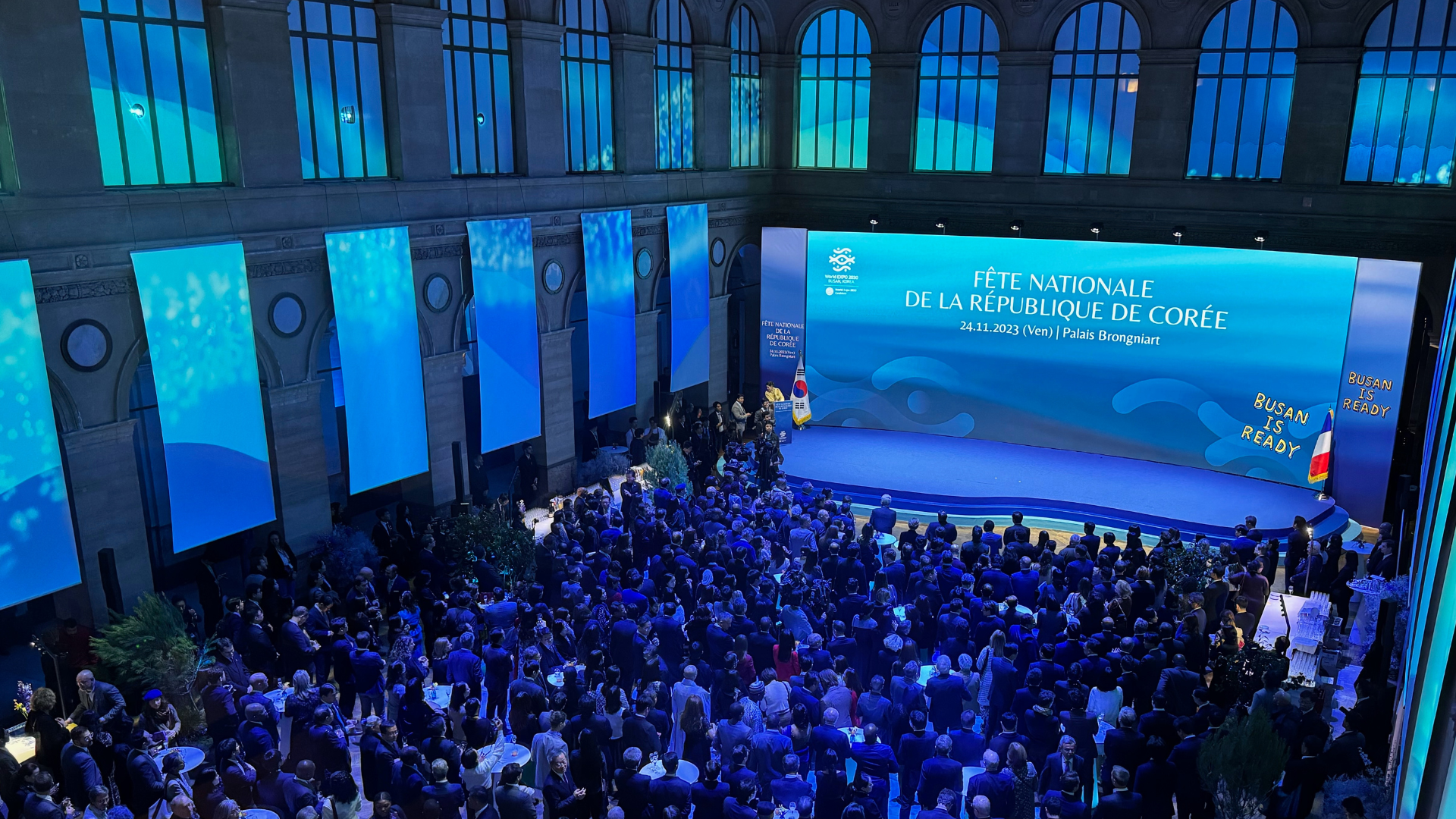
Harmonization with the overall event design
The impact of event video projection and video mapping depends directly on their ability to fit within a coherent scenography. From the design phase, creative teams must work closely with technical managers, scenographers, and visual content producers to define the placement of projection surfaces, the type of content to be developed, and the visual role assigned to each sequence. It is important for the projected animations to interact with the materials used, the dominant colors, and the architectural lines of the set. This smooth visual integration ensures a seamless immersive experience with no stylistic disruption. When projection becomes a natural extension of the scenography, it significantly enhances the emotional impact on the audience and gives meaning to every moment.
Synchronization with sound and lighting
To reach its full potential, immersive video projection must be perfectly synchronized with the sound and lighting environment. Sound (whether it’s an original soundtrack, voiceover, sound effects, or live music) plays a key role in the sensory experience. Visual animations must evolve in rhythm with the audio elements to heighten dramatic effect, support storytelling, or build tension. Similarly, lighting effects, whether static or dynamic, should be designed to complement the projected visuals. The combined use of stage lighting technology and video mapping makes it possible to create vivid, evolving, and immersive visual scenes in which every technical element works in synergy. This fusion of image, sound, and light turns a performance into a fully orchestrated audiovisual experience that captures attention and leaves a lasting impression.
